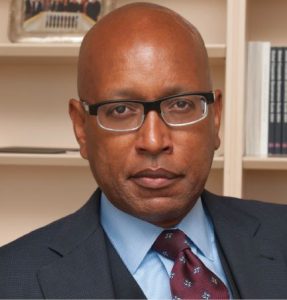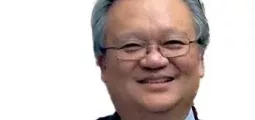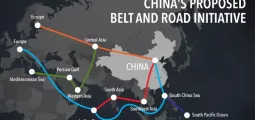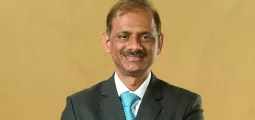IFC: Capital Markets Key to Development

Author: Ethiopis Tafara
Ending extreme poverty for good and building shared prosperity across the developing world takes money – a lot of money. Take infrastructure: for the foreseeable future, an estimated $50 billion per year is needed in Africa alone to deliver basic services such as clean running water and electricity, and to build roads connecting communities to markets.
Annual infrastructure financing needs in Latin America amount to over $300 billion between now and 2020; and in populous Asia the price tag is $8 trillion over 2010-2020 period. These numbers are equivalent to seven percent of these region’s GDP. This is double the percentage of GDP the developed countries spend on their infrastructure and it highlights the magnitude of the challenge the emerging economies face in advancing their development.
This is only part of the story. Small and medium-sized enterprises in emerging economies – and counting only the minority in the formal sector – are also starved for finance. Their needs are over $250 billion in Latin America, $200 billion in Asia, and at least half that in Africa.
It is clear that developing country governments cannot provide financing on this scale, neither can donor governments, nor local financial institutions. For the answer, one must turn to the capital markets.
“It is clear that developing country governments cannot provide financing on this scale, neither can donor governments, nor local financial institutions.”
Consider the supply side of the equation – the amount of money available for investment around the world. In 2013, assets controlled by institutional investors in OECD countries grew to over $92 trillion dollars – a number that keeps rising. The world’s largest 300 pension funds control almost $15 trillion, while sovereign wealth funds have amassed about $6.5 trillion.
Imagine if the emerging economies could capture just a fraction of these funds. Then consider the rapidly growing domestic savings rates across emerging economies. In Africa, there are now nearly $400 billion dollars in pension fund assets, and in Latin America the pension funds of the five largest economies alone controlled over $720 billion in 2013. In Asia’s growing economies the figures are even more impressive.
There is enough capital in the world. The question is how to channel these funds to meet development needs more effectively in a way that works for investors. Capital markets are a big part of the solution.
Time and time again capital markets have proven to be effective intermediaries in channelling savings and other funds to countries’ national development priorities that fuel economic growth and create jobs. As such, capital markets serve as an alternative to the banking sector. In this role, they not only mobilise additional financing that drives economic growth, but by virtue of providing an alternative, capital markets also introduce financial stability into economies. They do this by taking a different approach to risk allocation, making economies more resilient in the face of capital outflows and banking crises.
Capital markets in developing countries – many of which are still in their infancy – hold tremendous potential. Local bond markets in some regions, for example, have been growing at a robust rate in the last decade. The Asian bond market has expanded more than fourfold since 2008 to $3tn, representing almost a quarter of GDP. In Sub-Saharan Africa, only South Africa had issued a sovereign bond before 2006, but now over $25bn dollars have been raised across the continent with $7bn issued in 2014 alone.
While these numbers fall short of the financing needs, they do point to the trajectory of growth that has gained considerable momentum in a short time. Similarly, the size of domestic bond markets in the largest Latin American countries has more than doubled since 1995. However, apart from Brazil and Mexico, the pool of capital is still relatively small.
What would it take for the emerging economies to develop robust capital markets to finance the growth of private enterprise, economy, jobs, and improve the lives of millions?
Today, when we think about global capital markets, we focus on the great financial centres – New York, London, Tokyo, and Hong Kong. But this focus on the largest and most modern markets misses an important point: every market is both similar and unique – similar in that they all respond positively to certain fundamentals, but unique in the environment and tradition in which they develop and prosper.
For example, the US capital market stands at approximately $60tn dollars. This is a huge number connected to a complex market. But its size and complexity obscure the simple fact that the US capital market is still just a market. Markets, in one form or another, have existed in every society since the dawn of recorded history. And, despite the size and complexity of modern trading places, market fundamentals today are similar to those that permitted markets to function thousands of years ago in ancient Sumer, Egypt, and China, or in the Bantu and Swahili cities of Africa.
These fundamentals are simple and include a place where buyers and sellers can meet. This place can be a simple bench under a buttonwood tree, which is where the New York Stock Exchange got its start, or an old-fashioned trading floor or, increasingly, the virtual space of the Internet.
Second, there must be property rights. Buyers and sellers must have some legal right to control and transfer the items traded. In ancient times, these rights were recognized by custom or possession. Today, they usually involve laws. Either way, without these rights, markets cannot exist.
Third, and most importantly, markets require trust. Trust is the lubricant that keeps the wheels of a market from grinding to a halt. It is the faith that a buyer is buying what he expects, and the faith that the seller will receive the payment promised at the agreed-upon time. Without this basic trust, no market in the world, no matter how technologically sophisticated, will succeed.
In Africa’s informal markets trust is based on your family, reputation, and the relationships you have built within a small community. In the diamond markets of New York and Amsterdam, trust is based on ethnicity, religion, and the personal interaction of a handful of traders. These markets work because of the value and reputation prevalent in their tight knit communities. With the anonymous trading that characterises modern capital markets, this personal trust has been replaced by a surrogate — best practices, securities laws, regulations, and their vigorous enforcement.
So how do we go about building trust in these new capital market? The answer lies not so much in the number of laws or regulations, but rather in the principles and behaviours they seek to establish. These need to reflect a thorough understanding of the investors’ perspectives and needs – it’s their capital at stake, after all.
One of the underlying principles governing trust is transparency. To earn trust, participants in the market need to be completely transparent to their investors, clients, and regulators about their practices, their conflicts of interest, and their risk profile.
Reliability and credibility are also essential. Investors need to have assurances that the information disclosed to them is accurate, complete, and verified. It gives them confidence that they have a sound basis to judge the value of what they are buying. So accountants and auditors serve a critical role in enabling the transparent and accurate financial reporting that underpins investor confidence and trust. Credit rating agencies are also key actors in rebalancing information asymmetries by providing information about the creditworthiness of companies to lenders and investors alike.
And, finally, trust is built on knowing that there is a public or private cop on the beat. Clear rules are necessary but their credible enforcement is equally crucial.
Without a doubt, governments have to play a central role in creating and enforcing the regulatory framework that fosters trust. But that takes time. Different market players – private companies, accountants, auditors, and rating agencies – a can do a lot on their own. Today, we benefit from the enormous body of knowledge and experience that stems from market successes and failures and has been translated into global principles and standards.
There are partners like the International Finance Corporation (IFC) to help make these principles and standards work across different environments in the emerging markets in order to build investor confidence as a foundation of capital markets. The development of domestic capital markets across the developing world has the potential to provide the funds necessary to drive economic growth, bring an end to extreme poverty, build shared prosperity, and bring robust returns for investors.

About the Author
Ethiopis Tafara is vice-president of Corporate Risk and Sustainability and General Counsel at the International Finance Corporation.
You may have an interest in also reading…
Fitch Ratings: Global Perspectives, Strong Local Experience and Credit Market Expertise
Fitch Ratings, a division of Fitch Group, is a leading provider of credit ratings, commentary and research. The additional context,
European Investment Bank: Investment Plan for Europe
Investment Plan for Europe – Paradigm Shift in the Use of Public Resources The Marshall Plan did much to inject
Motsepe: First African to sign the Giving pledge
Patrice Motsepe, aged 51, is a South African mining magnate born in Soweto who is now reputed to be the




























































































